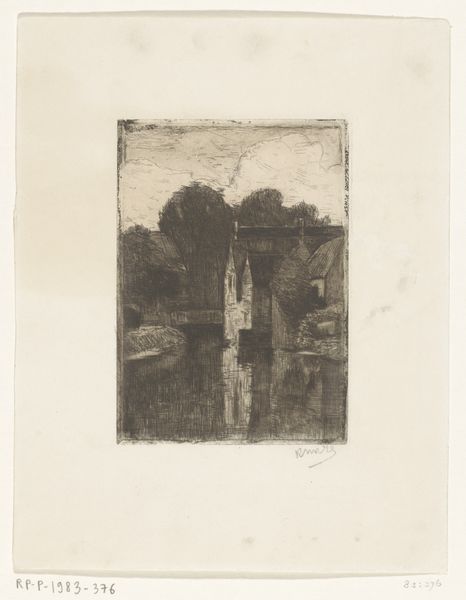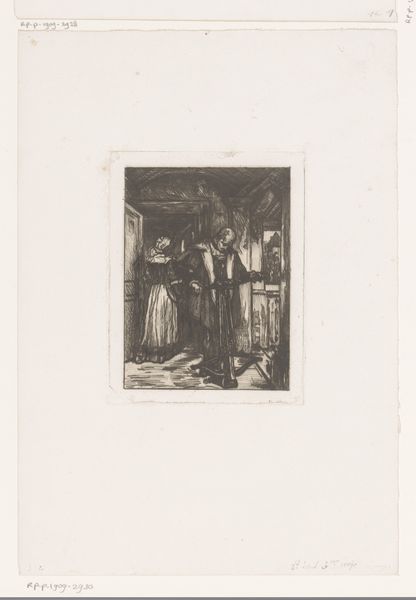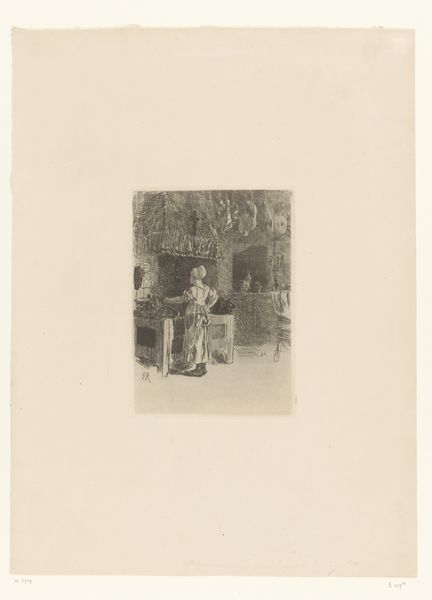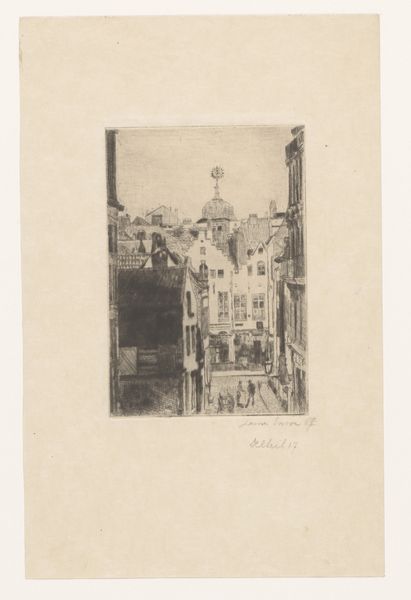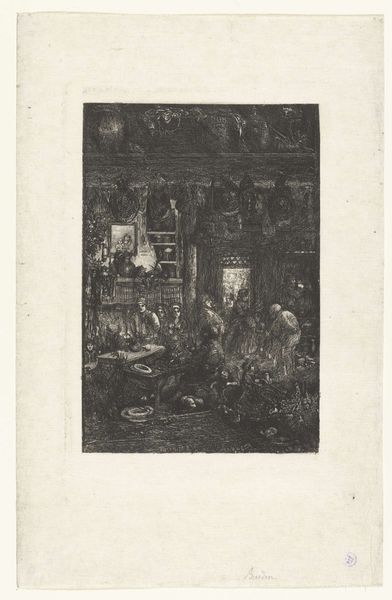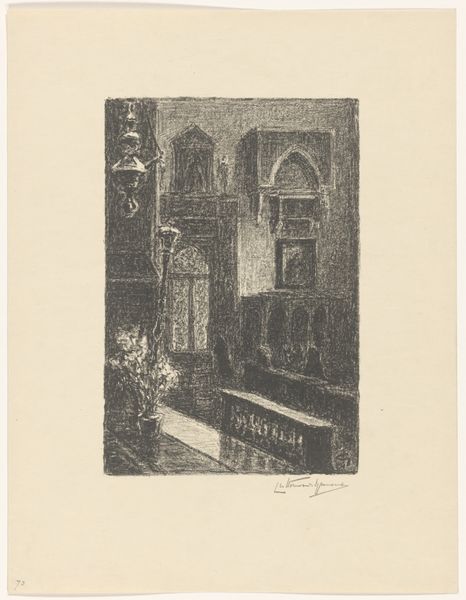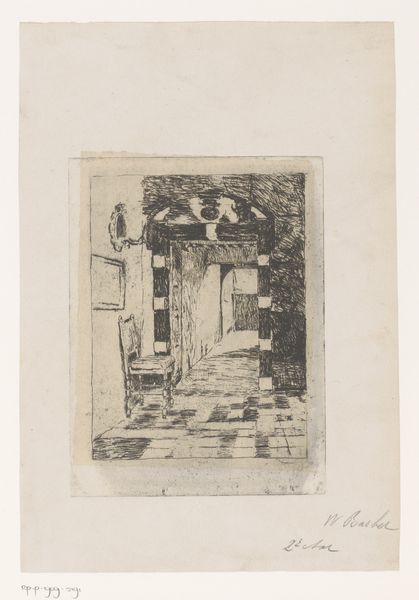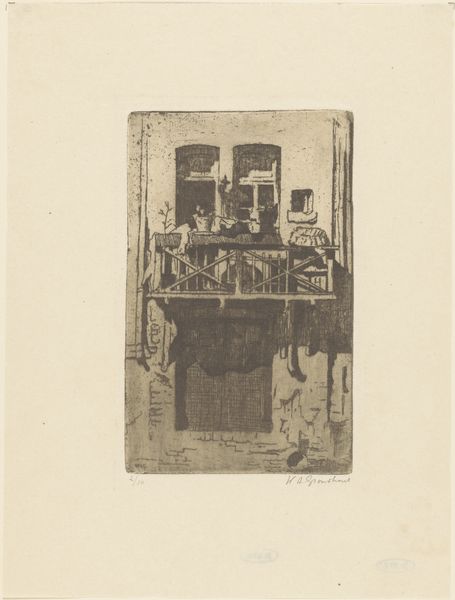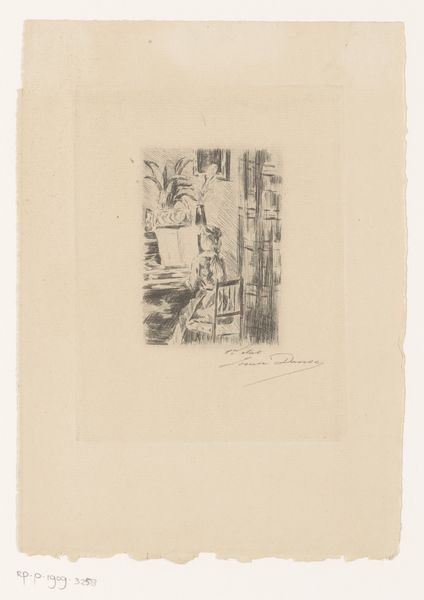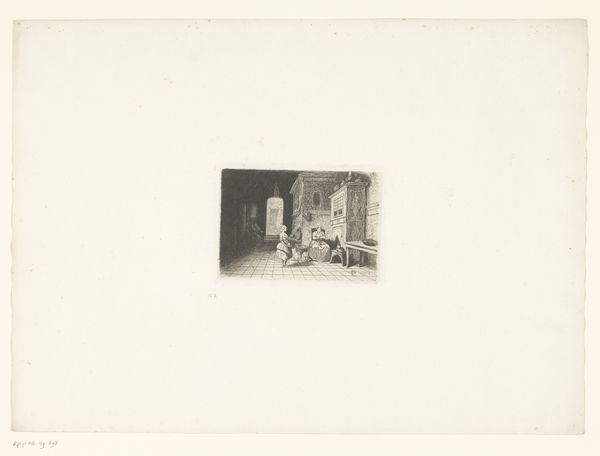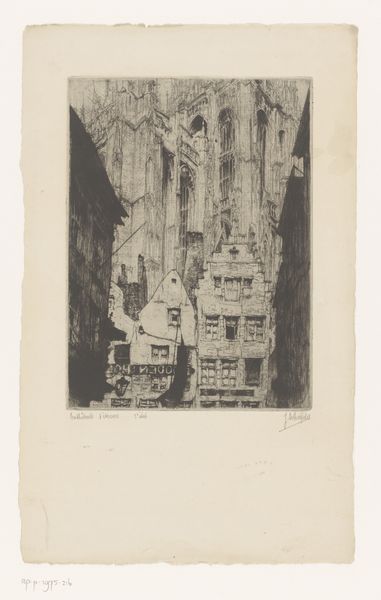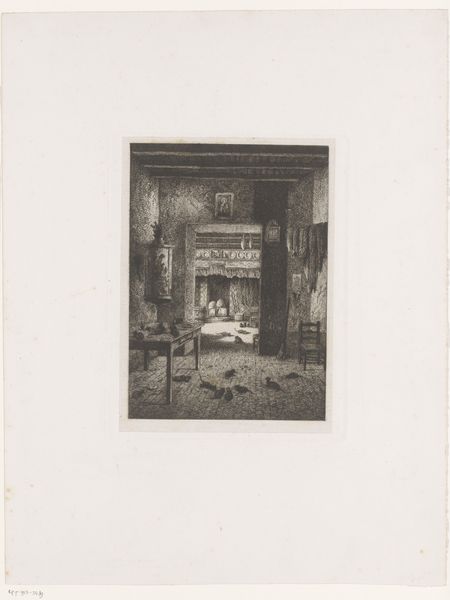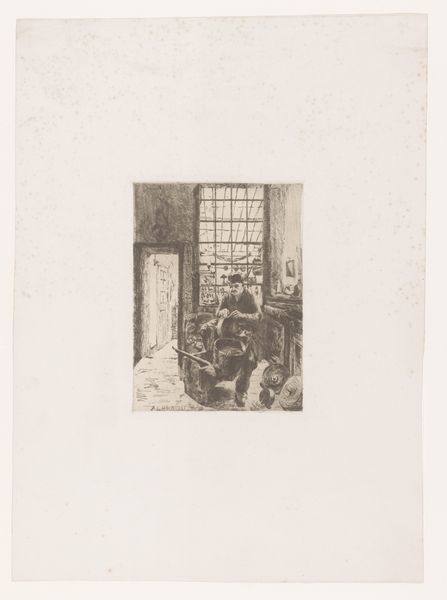
drawing, print, etching, paper
#
drawing
#
narrative-art
# print
#
etching
#
german-expressionism
#
figuration
#
paper
#
history-painting
Dimensions: height 236 mm, width 183 mm
Copyright: Rijks Museum: Open Domain
Curator: Up next is "Kerkdienst van Georgiritter," or "Church Service of Georgiritter," an etching by Max Slevogt dating back to 1911. It's currently held here at the Rijksmuseum. Editor: It’s quite dark, isn't it? Almost claustrophobic. The scene is heavy, solemn... the details are smudged, contributing to this very somber mood. Curator: The choice of etching really emphasizes this. The incised lines in the metal plate, holding the ink... it's a physically laborious process and in itself adds to this sense of something hard-won and perhaps weighty. Consider also that etching allows for very fine details. The image, although appearing indistinct at first glance, offers a complexity in the lines once examined closely, and speaks to an intimate attention on Slevogt’s behalf. Editor: Absolutely, and I can't help but see it in light of the rising tensions of the time, leading to World War I. This is German Expressionism after all. Are we witnessing the anxieties of a society on the brink? Is the church offering solace or highlighting the deep divisions and uncertainties of the period? It's impossible to ignore how social upheavals might affect artists' choices. Curator: I agree that it resonates, the darkness, the heaviness... certainly indicative of what’s coming down the line. One also can't ignore how his engagement with material and production ties in more directly to Germany's long, complicated relationship to industry. The rise of mass printmaking methods at that moment, and this turn toward detail through more ‘antiquated’ laborious etching techniques—there’s a tension to that! Editor: I see your point, that tension certainly fuels the unease that I think a contemporary viewer feels upon seeing this. And it highlights a central, but complicated idea for today's audiences: that what is memorialized in history often depended upon which processes and actions were chosen, who had control over them, and who didn’t. Curator: Precisely. And these deliberate aesthetic decisions are critical to its emotional impact! Editor: This little etching reveals a wealth of complex considerations, doesn't it? It encourages us to consider social context, German history, anxiety, class… and of course, artistic choices that reveal both these pressures and tensions. Curator: I agree completely! By examining the material means alongside the thematic content, we gain a deeper appreciation for both Slevogt’s craft and the complex narrative it subtly conveys.
Comments
No comments
Be the first to comment and join the conversation on the ultimate creative platform.

